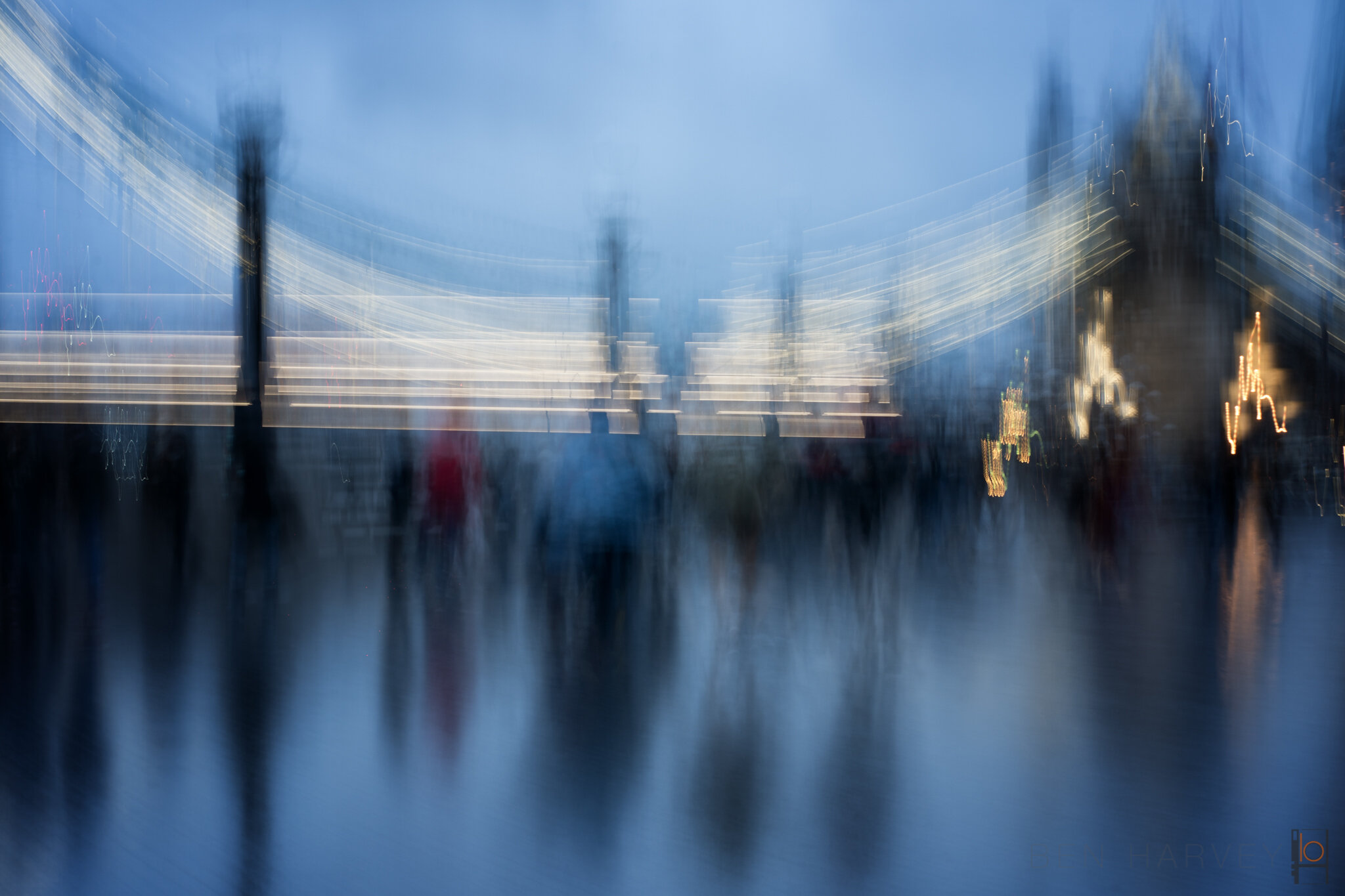Trying out new ideas
This isn’t a new genre of photography, but surprisingly it is new to me. I have wanted to try it out for ages now, and finally forced myself to do it.
So what is ICM?
Well, it is simple as deliberately moving the camera during an exposure (whilst taking the photo). At first you might look at the photos and think, he just didn’t hold the camera still when he took the shot, he obviously doesn’t know how to use his camera. And this is why you have to practice and figure out what works best.
How much movement the final image will have varies dramatically based upon a few factors. Some of which are: how fast you move the camera, the length of the exposure, the focal length (or how far zoomed in you are). Let’s start off with some easy examples. I took the below collection of photos in my office, the colours and lights are all created by LED lights that I have on my shelves. I just experimented with panning and twisting the camera during a 2 second exposure. Beautiful aren’t they. Like something ready for a windows desktop background.
Urban Flow 1
Urban Flow 2
Urban Flow 3
Urban Flow 4
The technical stuff
The good news is that you don’t have to lug around a tripod around with you to do this, which is great. If you want to create this look in the daytime, you will have to figure out how you adapt your camera’s settings to achieve the longer shutter speed. You have several things at your disposal to achieve this, ISO and aperture. The lowest ISO will be what you want to start with, and ideally an aperture no smaller than F11, so that you still get crisp lines of light. If you still cannot achieve the shutter speed that you need using ISO 100 (or your camera’s base ISO) AND the smallest aperture of your lens (this may be F22), it maybe even smaller; then you will need to wait for the light levels to drop or introduce a filter that will reduce the amount of light. This could be a polarising filter or a neutral density (ND) filter. I have written a separate piece about filters here.
Next I took to the street of London to see how the effects of shooting the urban cityscape at twilight would expand upon the above images I had taken. The following images still concentrate on the light sources themselves, before I moved onto more difficult subjects.
Urban Flow 5
Urban Flow 6
I was feeling pretty confident about the images that I had so far, so I decided to move onto creating ICM images of more recognisable subjects, but with the added movement. Not so much movement that the image is a mess, and you can no longer understand the main subject, but enough movement to reassure the viewer that it was intentional. Hopefully.
Urban Flow 7
Urban Flow 8
Urban Flow 9
Urban Flow 10
Urban Flow 11
Urban Flow 12
Urban Flow 13
Urban Flow 14
Urban Flow 15
Urban Flow 16
Urban Flow 17
Urban Flow 18
This will be another on-going project, but I will be sure to take you on my journey. Thanks for visiting!
Ben




















